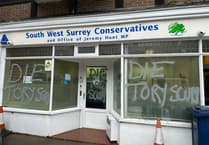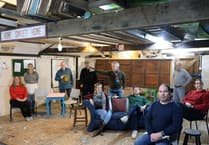Residents will have noticed the prominence of ‘plans’ in recent news. As a councillor for Alton town, I have spent a great deal of time poring over documents pertaining to the upcoming EHDC Local and Alton Neighbourhood plans.
This research, coupled with nearly 25 years living in (an ever expanding) Alton has led me to form my own opinions:
1) Local Plans set out a vision and a framework for the future development of an area.
2) Neighbourhood planning gives communities direct power to develop a shared vision for their neighbourhood and shape the development and growth of their local area.
Both the above gov.uk quotes are true. However, as presented, these plans create an expectation that they rarely deliver.
During public consultations, residents are presented with various aspirations and proposals then encouraged to comment as they see fit.
When it comes to Neighbourhood plans, much of this work is done by well-intentioned volunteers who are deeply concerned about the wellbeing of their communities.
Nothing wrong with that, public involvement is a good thing, however…
Frequently, residents cite inadequate health provision (GPs and dentists), schools and community services as leading concerns. They gain the impression that a “plan” can affect meaningful change – in my view it cannot and does not.
The overarching aim of plans is to establish sites for new housing development - as simple as that. The rest, in my opinion, is “smoke and mirrors” – a cynical attempt to convince residents that they are being listened to. Implying improvements will be delivered – improvements often way beyond the scope of local government.
In addition, the plans often divide communities by cynically exploiting the inner ‘NIMBY’:
“If they build on the other side of town, that’s better than behind my house. I’ll vote yes.”
I see this in evidence in Alton as have colleagues elsewhere.
So why does local government spend so much time and your taxes on developing such plans? In my view – funding. With a plan in place, the percentage of ‘Community Infrastructure Levy’ (CIL) received by your council increases. CIL is paid by developers and is intended to improve our communities by way of grant awards. However, is the trade-off a good one?
As communities we agree to further development of our green spaces to satisfy the insatiable developers – “selling off the family silver”. This growth without any meaningful increase in public services does far more harm to our communities than the CIL increase can ever hope to offset.
It is time to band together, reject these plans and say “NO” to all development of our countryside.
By Matthew Kellermann
Alton town councillor for Wooteys ward




